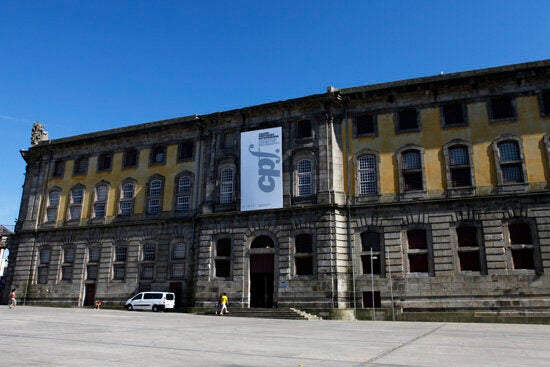Some places just aren't as captivating as they once were. Saying that about the Portuguese Center for Photography isn't a criticism, it's an observation; this attraction is housed in the building that previously served as Porto's prison and court of appeal.
The chunky stone walls of the former prison make for an eerily atmospheric exhibition space. It's good to see a historic building being maintained and used long after its original function was moved elsewhere. The metal grills on the windows and solid doors mean, presumably, that exhibits here are safe from would-be pilferers. You can steal glances into neighbouring houses as you look out from windows cut through thick walls.
Interestingly, the prison has long links with photography. The faces of inmates were recorded by the photographers of the prison's Anthropometric Post, founded in 1902. The motives for doing so were mixed. It was part of a project to document faces for practical criminal detection purposes and, in part, a study of delinquency. A number of the inmates' staring faces can be seen, recorded in sepia, on the first floor.
You can see the cameras used to record the criminals' portraits up on the second floor, among a collection of equipment that many collectors will envy. The cameras include early examples of precision-built machines made by opticians using lenses mounted on brass fittings and wooden boxes. Single Lens Reflect and compact cameras from the 1960s and 1970s also feature in the collection.

If you enjoy photography, set aside plenty of time to visit the Portuguese Center for Photography and make sure you visit the library, which is well-stocked with international books and magazines that you can browse for as long as you want.
The construction of this building, which was previously known as the Cadeia da Relação, began in 1767 and lasted 30 years; thus predating photography. The huge rooms of the ground floor, today used for exhibitions, were once communal cells.
A tour through the building provides an insight into how social divisions and an individual's wealth could result in better treatment, even when convicted and on the inside. The doors of the individual cells on the upper floor were only locked at night. Interestingly, the prisoners' chapel, where mass used to be celebrated, can still be seen, overlooking the central courtyard.
Over time the purpose of prisons changed and conditions in this building deteriorated. The collapse of the New State (Portugal's right wing Estado Novo) during the Carnation Revolution of 1974 heralded the closure of the prison. Architects Humberto Vieira and Eduardo Souto Moura collaborated on the redesign of the space that we now know as the Portuguese Center for Photography.
Entry to the Portuguese Center for Photography (known locally as the Centro Português de Fotografia) is from 10.30am to 12.30pm and 3.00pm to 6.00pm on Tuesdays to Fridays and from 3.00pm to 7.00pm on Saturdays, Sundays and public holidays. The centre is free to visit and you can find details about temporary exhibitions on the centre's website.
Unlike some of the previous visitors to this place, you're free to come and go as you please.
